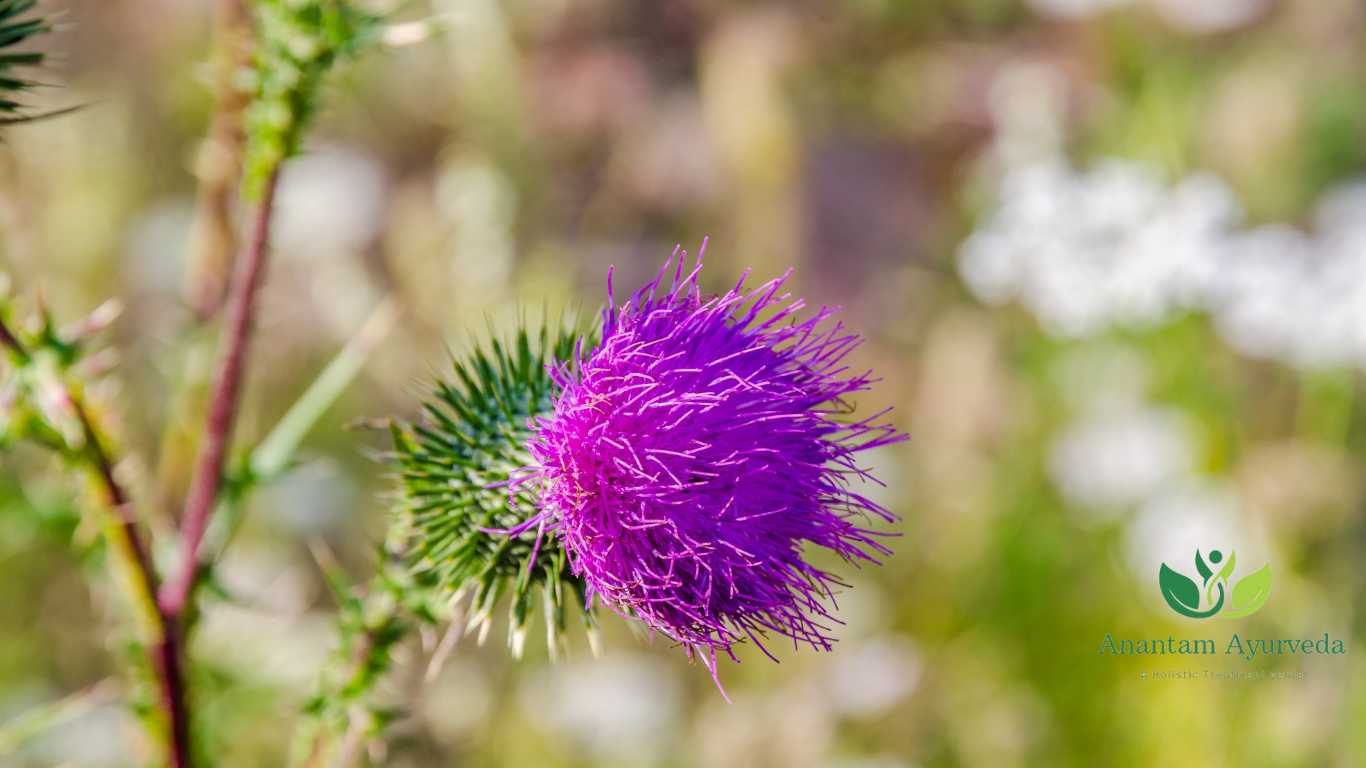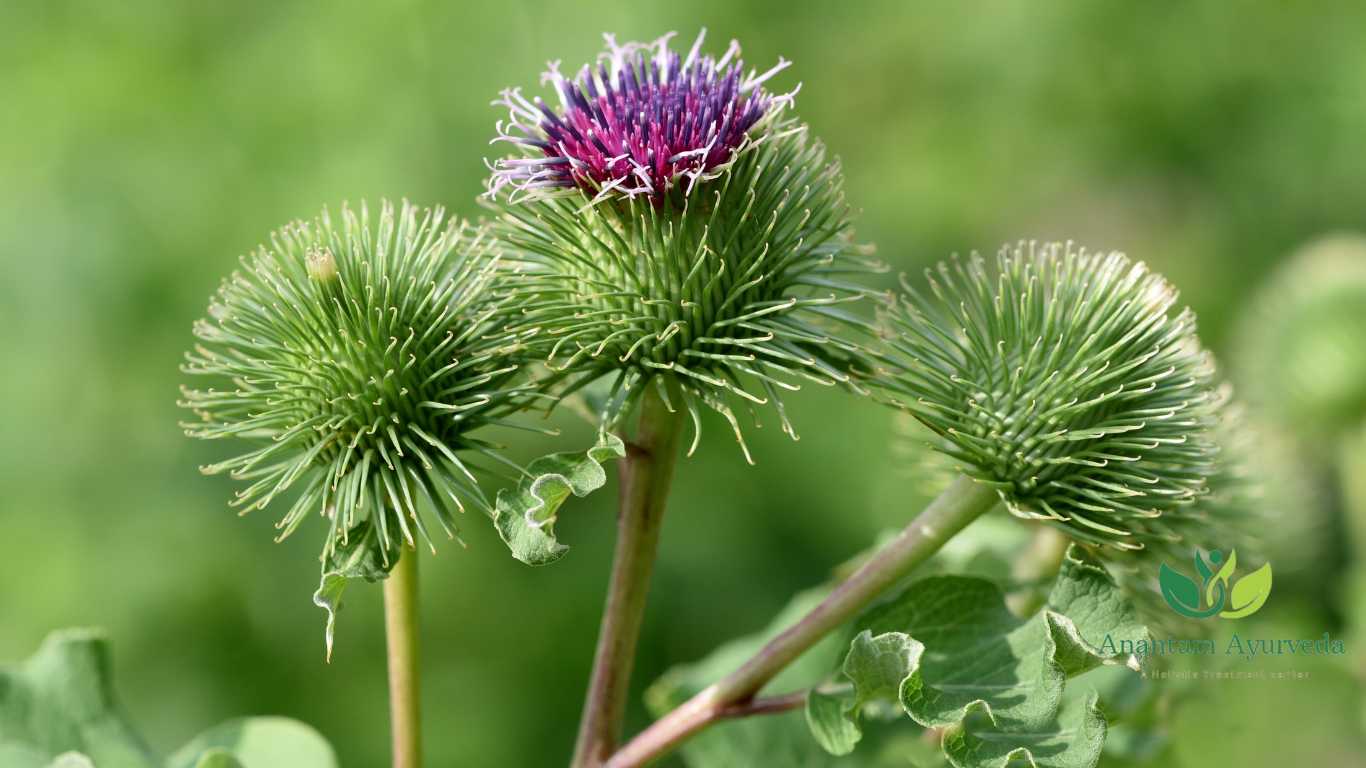Kushta (Saussurea lappa): Health Benefits & How to Use
In the world of herbal medicine, few plants hold the same level of reverence and significance as Kushta, scientifically known as Saussurea lappa. This extraordinary herb, deeply rooted in the principles of Ayurveda, boasts a rich history and a plethora of health benefits. In this comprehensive guide, we delve into the various aspects of Kushta, from its chemical composition and qualities according to Ayurveda to its influence on Doshas and how to incorporate it into your daily life.
What is Kushta?
Kushta, scientifically known as Saussurea lappa, is a perennial herb belonging to the Asteraceae family. Native to the Himalayan regions of India, Pakistan, and Afghanistan, this herb is highly regarded in Ayurvedic medicine. It exhibits a combination of tastes, including bitter (tikta), pungent (katu), and sweet (madhur), and qualities like lightness (laghu) and dryness (ruksha).
Kushta is prized for its diverse health benefits, such as improving digestion, supporting respiratory health, and boosting the immune system. Its bitter taste and heating potency (ushna virya) make it effective in pacifying Vata and Kapha doshas. It is used in various forms, including powder and decoction, for internal consumption, and as a paste for topical applications. Kushta’s versatility and therapeutic properties have secured its place as a valuable herb in Ayurvedic healing practices.
The Chemical Composition and Useful Parts of Kushta
The potency of Kushta lies in its chemical composition. It contains essential oils, resin, tannins, and various phytochemicals that contribute to its medicinal value. The root of the Kushta plant is the primary part used for therapeutic purposes. Its active compounds include sesquiterpene lactones, which are known for their anti-inflammatory and immune-boosting properties.
Qualities of Kushta According to Ayurveda
Rasa (Taste): Kushta possesses a unique combination of tastes, including Tikta (bitter), Katu (pungent), and Madhur (sweet). This diverse taste profile imparts a distinctive and balanced flavor to Kushta.
Guna (Quality): Kushta’s qualities encompass lightness (laghu) and dryness (ruksha). These attributes align perfectly with its traditional use in Ayurveda, where it serves as a remedy for various conditions, benefitting from its light and dry nature.
Virya (Potency): Kushta maintains a potent heating quality (ushna virya), making it a valuable herb for kindling the digestive fire (Agni). This heating potency contributes to its effectiveness in improving metabolism and aiding in the digestion of food.
Vipaka (Post-Digestive Effect): After digestion, Kushta exhibits a post-digestive effect that includes the tastes Tikta (bitter), Katu (pungent), and Madhur (sweet).

| Ayurvedic Quality | Description |
|---|---|
| Rasa (Taste) | Tikta (Bitter), Katu (Pungent), Madhur (Sweet) |
| Guna (Quality) | Laghu (Lightness), Ruksha (Dryness) |
| Virya (Potency) | Ushna (Heating) |
| Vipaka (Post-Digestive Effect) | Tikta (Bitter), Katu (Pungent), Madhur (Sweet) |
Kushta’s Influence on Doshas in Ayurveda
When it comes to Kushta (Saussurea lappa), its unique qualities primarily focus on pacifying Vata and Kapha doshas.
- Vata Dosha: Kushta plays a significant role in pacifying Vata dosha, thanks to its bitter taste and heating potency (ushna virya). It helps to alleviate conditions associated with excess Vata, such as dryness, irregular digestion, and nervousness. By calming Vata, Kushta promotes a sense of balance and grounding.
- Kapha Dosha: Kushta’s bitter taste and drying nature are well-suited for pacifying Kapha dosha. It aids in reducing excess mucus, congestion, and lethargy often associated with aggravated Kapha. Kushta’s ability to warm the body complements its role in addressing Kapha-related imbalances.
While Kushta primarily targets Vata and Kapha doshas, its effects may vary from person to person. It is always advisable to consult with a qualified Ayurvedic practitioner to determine the best use of Kushta based on individual constitution and specific health needs.

Health Benefits of Kushta (Saussurea lappa)
- Digestive Health: It kindles the digestive fire (Agni) due to its heating potency (ushna virya). This property helps in improving digestion, reducing indigestion, and alleviating issues like bloating and gas.
- Respiratory Health: Kushta’s ability to balance Kapha dosha makes it valuable for respiratory health. It helps clear excess mucus from the respiratory tract, making it beneficial for conditions like asthma, bronchitis, and coughs.
- Immune System Support: This herb possesses immune-boosting properties that strengthen the body’s natural defense mechanisms. It aids in fighting off infections and enhancing overall immunity.
- Anti-Inflammatory Effects: Kushta’s anti-inflammatory nature makes it useful for managing inflammatory conditions, such as arthritis and joint pain. It can provide relief from pain and discomfort associated with these conditions.
- Skin Health: Its anti-inflammatory and detoxifying properties may help manage skin conditions like eczema, psoriasis, and acne.
- Balancing Doshas: Kushta’s bitter taste and heating potency help balance Vata and Kapha doshas, making it an excellent herb for individuals with imbalances related to these doshas. It can restore equilibrium and promote overall well-being.
- General Well-Being: Kushta can contribute to overall well-being by supporting various bodily functions, improving metabolism, and enhancing vitality.
- Detoxification: Due to its bitterness and detoxifying properties, Kushta can help cleanse the body by eliminating toxins and promoting healthy liver function.

How to Use Kushta (Saussurea lappa)
- Powder Form: It is often available in powdered form. To use it, you can mix Kushta powder with various substances depending on your needs:
- For Digestion: Mix Kushta powder with warm water or honey and consume it. This can help improve digestion and alleviate digestive issues.
- For Respiratory Health: Combine Kushta powder with honey or warm water to create a paste. Consume this mixture to soothe respiratory conditions like coughs and congestion.
- Decoction: You can prepare a decoction using Kushta root. Here’s how:
- Take a small piece of Kushta root (about 1-2 inches in length).
- Boil it in water until the water is reduced to half its original volume.
- Strain the liquid and consume the decoction. This method is beneficial for various health concerns and provides a concentrated form of Kushta’s benefits.
- Topical Application: It can also be used externally for skin-related issues. To make a paste for topical application:
- Mix Kushta powder with water or a carrier oil (such as coconut oil) to create a paste.
- Apply the paste to the affected area of the skin. This can help manage skin conditions like eczema, psoriasis, and acne.
- Ayurvedic Formulations: It is often useful in various Ayurvedic formulations and herbal remedies. These formulations are carefully crafted to address specific health concerns. It’s advisable to consult an Ayurvedic practitioner for guidance on using such formulations.
- Dosage: The appropriate dosage of Kushta can vary on the basis of individual and the specific conditions. Ayurvedic practitioners consider factors like age, body type, and the severity of the ailment when determining the dosage. Always follow the recommended dosage provided by a qualified practitioner.

Safety and Precautions
While it offers a myriad of health benefits, it’s important to use it judiciously and under the guidance of a qualified Ayurvedic practitioner. Pregnant and nursing women, as well as individuals with specific medical conditions, should consult a healthcare professional before incorporating Kushta into their regimen.
In conclusion, Kushta, or Saussurea lappa, is a treasure trove of health benefits deeply rooted in Ayurveda. From its impressive chemical composition to its harmonizing influence on doshas and versatile applications, Kushta has rightfully earned its place as a revered herb in traditional medicine systems. When used mindfully and responsibly, it can be a powerful ally in your journey toward optimal health.
You can follow us on twitter, facebook, instagram & Google News

2 Comments